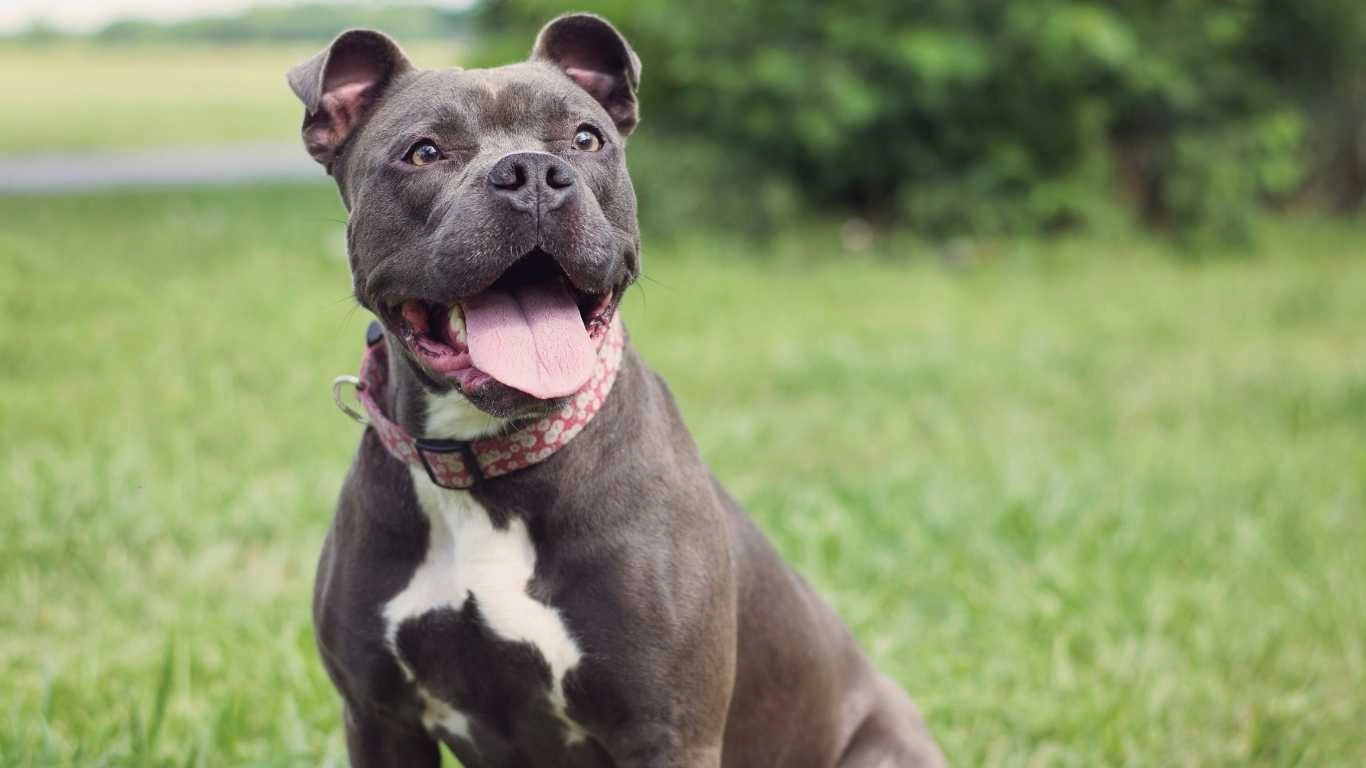How to Make Dog Food More Palatable for Picky Eaters: Proven Solutions
If you’ve ever had a picky eater in your household, you know the struggle of trying to get your dog to eat something other than the same old kibble or that deliciously tempting human food you’re enjoying. As an Animal Care Specialist with years of hands-on experience at a pet clinic and shelter, I’ve seen my fair share of dogs who turn their noses up at meals. Whether it’s due to a sensitive stomach, dietary restrictions, or just plain pickiness, it’s a challenge that many pet owners face. If you’re wondering how to make dog food more palatable for picky eaters, you’re not alone. I’m here to help, sharing some of the tips and tricks I’ve learned through experience that can encourage your furry friend to enjoy their meals without the drama. Let’s dive into this journey of turning mealtime into a tail-wagging event.
Why Some Dogs Are Picky Eaters
Before we start experimenting with different ways to entice your dog into eating their food, it’s essential to understand why some dogs are picky eaters in the first place. There could be a variety of reasons, and knowing these will help you make more informed decisions when you try new strategies.
Health Issues
One of the first things to rule out when your dog isn’t eating as they should is whether there’s an underlying health problem. Dogs can be picky eaters for a variety of health-related reasons, such as dental issues, gastrointestinal problems, or even food allergies. I’ve worked with dogs who were simply too uncomfortable to eat because their teeth were bothering them, and once we addressed that, their appetite came back. Always consider checking with your vet to make sure your dog isn’t avoiding food due to something physical.
Stress and Anxiety
Believe it or not, emotional stress can play a significant role in your dog’s eating habits. Changes in their environment, like moving to a new home, the addition of a new pet, or even changes in your routine, can cause stress that affects their appetite. In the shelter, I’ve seen many dogs stop eating due to the stress of being in an unfamiliar environment, and it often takes a little time for them to settle in before their appetite returns to normal.
Picky Eating Out of Habit
Some dogs are simply creatures of habit, and if they’ve developed a routine of being picky about their food, it might take some time to break that habit. Dogs are smart, and they know what they like. If your dog has learned that you’ll eventually give them something else if they turn up their nose at their bowl, they may just keep doing it until they get what they want. It’s tough love time, and breaking this cycle can require patience and consistency.
How to Make Dog Food More Palatable for Picky Eaters

Now that we have a better understanding of why dogs can be picky, let’s get into some of the best strategies I’ve learned to make dog food more palatable for picky eaters. Remember, every dog is different, so it may take some trial and error to find the right method that works for your furry friend. Here are some simple yet effective ways to get your dog to enjoy their meals.
Mix in Some Wet Food
One of the easiest ways to make your dog’s food more appetizing is by mixing in a little bit of wet food. Wet food is typically more aromatic and flavorful than dry kibble, which can sometimes be bland. I’ve found that many picky dogs are more inclined to eat when they smell something more inviting. Adding a spoonful of high-quality wet food can make all the difference. Plus, the moisture in wet food can help keep your dog hydrated, which is a bonus!
Top it with a Tasty Treat
If your dog refuses to eat their regular food, try topping it with a dog-safe treat or food topper. This could be something simple like a sprinkle of cheese, a dollop of peanut butter, or some cooked chicken. I’ve seen dogs who wouldn’t touch their food suddenly dive in when they smell something delicious on top. Just make sure whatever you add is safe for dogs—avoid harmful foods like chocolate, onions, or garlic.
Heat Up the Meal
Another trick I use often is heating up the food, especially if it’s wet food or if you’ve mixed it with dry kibble. Just like how we humans enjoy a warm meal, some dogs find their food more appealing when it’s heated up. Heating the food enhances the aroma and brings out its natural flavors. It’s a small change that can make a big difference for picky eaters.
Serve Smaller Portions More Often
If your dog is one of those who seems to turn their nose up at food when it’s placed in front of them in a large bowl, try serving smaller portions more often throughout the day. I’ve worked with dogs who were intimidated by the sight of a big bowl of food, but once we broke their meals down into more manageable portions, they were much more eager to eat. This approach also has the benefit of keeping their energy levels consistent throughout the day.
Understanding Your Dog’s Preferences
Each dog is unique, and understanding their preferences can go a long way in helping you make their food more palatable. Pay attention to their eating habits, their reactions to different foods, and any signs that they might prefer a specific type of protein or texture. With some patience and observation, you’ll learn what makes your dog’s tail wag during mealtime.

Stay tuned as we dive deeper into how to create a meal routine and further explore how to make dog food more palatable for picky eaters. But for now, try these tips out and see if they make a difference for your dog. With a little creativity and understanding, you can transform mealtime into something your dog looks forward to instead of something they avoid.
Creating a Consistent Mealtime Routine
Once you’ve experimented with different ways to make dog food more palatable for picky eaters, the next step is to establish a consistent mealtime routine. Believe me, this can make a world of difference. As an Animal Care Specialist, I’ve seen how structure can really benefit dogs. Dogs thrive on routine, and creating a set mealtime schedule can help alleviate anxiety and encourage better eating habits.
Why Consistency Matters
Just like with humans, dogs feel more comfortable when they know what to expect. Establishing regular meal times can prevent your dog from developing mealtime anxiety, and it can also help them feel more secure in their environment. I’ve worked with dogs who were incredibly picky simply because their owners fed them at different times every day, causing confusion and stress. Having set feeding times, on the other hand, encourages your dog to expect food at specific intervals, and over time, it can help regulate their appetite.
How Often Should You Feed Your Dog?
The number of meals you serve your dog depends on their age, size, and activity level. For puppies and younger dogs, it’s generally best to feed them three times a day, while adults can usually be fed twice. Senior dogs may need more frequent, smaller meals. I’ve found that serving smaller meals more often works especially well for picky eaters, as it reduces the pressure of a big meal in front of them. They know they’ll have another chance to eat soon, which can make them feel more comfortable.

Try Mixing in Healthy Toppers and Supplements
If your dog is still struggling with their meals, another great way to make their food more palatable is by adding healthy food toppers and supplements. Not only can these add variety and flavor, but some ingredients are also designed to support your dog’s health in other ways. I’ve used many of these tips over the years, and they really do help create a meal that’s both nutritious and irresistible.
Food Toppers That Make a Difference
Food toppers are one of the easiest ways to encourage picky eaters to dive into their bowl. These are often sold as “meal enhancers,” and they can range from freeze-dried raw food to simple flavor boosters like grated cheese or a drizzle of bone broth. I’ve had success with adding things like sweet potatoes or pumpkin puree to a dog’s meal, which not only increases the flavor but also adds fiber and nutrients. The key here is to make the food seem more exciting without overwhelming your dog’s stomach with something too rich or heavy.
Supplements for Picky Eaters
Sometimes, picky eating goes hand in hand with certain nutritional deficiencies. Adding a supplement can improve the taste of your dog’s food while also boosting their overall health. Common supplements for picky eaters include probiotics (for digestive health), omega-3 fatty acids (for coat and skin health), and digestive enzymes. These supplements can help balance out any dietary gaps and make your dog’s food more appealing. I’ve recommended probiotics to several pet owners, and I’ve seen an improvement in both appetite and digestion in some very picky dogs.
Using a Variety of Protein Sources
One trick that often works wonders is to offer your dog a variety of protein sources. Dogs, just like humans, can get bored of eating the same thing every day. If you’ve been feeding your dog chicken kibble for months on end, it’s no wonder they’re hesitant to eat it. Offering different proteins like beef, lamb, turkey, or even fish can help spice up their meals and reignite their appetite. I’ve found that dogs who are offered a rotation of proteins often become more enthusiastic about mealtime.
How to Rotate Proteins Safely
When rotating proteins, it’s important to do it gradually. Sudden changes to your dog’s diet can cause stomach upset or digestive issues. Start by mixing a small amount of the new protein into their regular food and slowly increase the amount over a week or two. If you’re switching from chicken to beef, for example, start with a 70/30 ratio of chicken to beef and gradually work towards a 50/50 balance. This will help your dog’s digestive system adjust without causing any discomfort.

Consider Homemade Meals for Picky Eaters
If you’ve tried everything else and your dog is still being picky, it might be time to consider cooking for them. I know this sounds like a lot of work, but making homemade dog food can be a game-changer for picky eaters. Not only does it allow you to control the ingredients and flavors, but it also gives you a chance to create meals that are tailored to your dog’s specific tastes and nutritional needs.
Simple Homemade Dog Food Recipes
There are plenty of simple and healthy homemade dog food recipes that you can try. One of my favorites is a basic chicken and rice dish. Simply cook chicken, mix it with rice, and add some cooked carrots or peas for extra flavor and nutrients. It’s easy, affordable, and often a big hit with picky eaters. Another popular recipe is ground turkey with sweet potatoes and green beans. These meals are easy to digest, and they can help your dog feel fuller and more satisfied.
Make Sure to Balance the Nutrients
It’s important to note that homemade dog food needs to be well-balanced to ensure your dog gets the necessary nutrients. Dogs require proteins, fats, carbohydrates, vitamins, and minerals to stay healthy. Before committing to a homemade diet, I recommend consulting with your vet or a pet nutritionist to make sure you’re meeting all of your dog’s nutritional needs. There are also premade supplements available to help balance out the nutrients if you’re cooking at home.
Homemade food can be a lot of effort, but many pet owners swear by it as a way to get their picky eaters to clean their plates every time. Plus, there’s something special about seeing your dog enjoying a fresh, home-cooked meal.
When to Seek Professional Help
If you’ve tried everything to make your dog’s food more palatable and they’re still refusing to eat, it might be time to consult a professional. A veterinarian can help rule out any medical conditions that could be causing the pickiness, and a pet nutritionist can help design a diet plan that ensures your dog’s specific needs are met. Don’t hesitate to seek expert advice—sometimes the best way to help your dog is by getting professional insight to tackle the issue head-on.

With these strategies in your back pocket, you’re well on your way to transforming your picky eater into a food lover. Remember to stay patient and consistent. Every dog is different, and it may take a little trial and error before you find the right combination of food, toppings, and routine. With love and persistence, you’ll soon find the right solution that works for your furry friend.
Enhancing the Mealtime Experience for Picky Eaters
As we dive deeper into the strategies for dealing with picky eaters, it’s important to remember that mealtime isn’t just about food—it’s also about making the experience more enjoyable for your dog. I’ve seen dogs become more enthusiastic about eating when their environment and mealtime routine are set up to reduce stress and encourage positive associations. There are several ways to enhance the mealtime experience and help your dog feel more at ease while eating.
The Right Feeding Environment
The environment where your dog eats can have a surprising impact on how much they enjoy their meals. In a shelter, I’ve noticed that dogs who eat in quiet, peaceful environments tend to have better appetites than those who eat in high-traffic areas. If your dog is constantly distracted by noise, other pets, or people, they may not focus on their food. Try setting up a quiet, comfortable space where they can enjoy their meals without interruptions. Whether that means using a dedicated feeding area in the kitchen or placing their bowl in a cozy corner of the room, a calm environment can make all the difference.
Consider Slow Feeders
If your dog is a bit of a food gulper, using a slow feeder bowl can be an excellent way to make mealtime more engaging and help prevent overeating or indigestion. Slow feeders are designed to make dogs work a bit harder for their food, which not only slows down the eating process but also keeps their mind engaged. I’ve had clients who were surprised at how much more excited their dog became about mealtime when they used a slow feeder. Plus, it can help with weight management if your dog tends to eat too quickly.

Maintaining a Balanced Diet for Picky Eaters
Ensuring that your dog is getting the right balance of nutrients is essential for their overall health and well-being. As you experiment with different ways to make their food more palatable, it’s also crucial to make sure their meals are providing all the nutrients they need. As an Animal Care Specialist, I’ve seen firsthand how important it is to keep your dog’s diet well-rounded and nutrient-dense, even if they are picky about their food.
The Importance of Protein and Fat
Protein is a crucial part of your dog’s diet. It’s the building block for strong muscles, skin, and hair. Whether you’re feeding your dog high-quality kibble or homemade meals, make sure that the protein source is suitable for their size, age, and activity level. Dogs generally thrive on lean meats such as chicken, turkey, or beef, but some dogs may have sensitivities or allergies to certain proteins. In those cases, you can explore alternatives like lamb or fish.
Fat is another important nutrient that should not be overlooked. Healthy fats provide energy, promote brain function, and help with the absorption of vitamins. I’ve seen picky dogs who were more willing to eat when their food contained a good source of healthy fats like salmon oil or flaxseed oil. Just be cautious not to overdo it, as too much fat can lead to weight gain and other health issues.
Carbohydrates and Fiber
Carbohydrates and fiber are vital for your dog’s digestive health. They help maintain healthy bowel movements and provide a steady source of energy. You can incorporate carbs into your dog’s diet through whole grains like brown rice or quinoa, as well as vegetables like sweet potatoes and carrots. I often recommend adding fiber-rich foods for dogs who are picky, as they can aid in digestion and make their meals more filling. Additionally, adding fiber can sometimes make the food more enjoyable by improving the texture.

Consulting a Veterinarian or Nutritionist
If you’ve tried all of the tips above and your dog’s picky eating habits persist, it’s time to consult a professional. While it’s easy to get frustrated with a picky eater, there are many factors that could be at play, and sometimes expert advice is the best solution. A veterinarian can help rule out underlying health issues, and a pet nutritionist can provide tailored dietary advice to ensure your dog is getting everything they need.
Why Professional Help Matters
As much as we want to help our dogs at home, there’s no substitute for the expertise of a trained professional. A veterinarian can run tests to identify any gastrointestinal or other health problems that might be affecting your dog’s appetite. On the other hand, a nutritionist can help you create a meal plan that meets your dog’s unique nutritional needs, taking into account their breed, size, and health status. Sometimes the key to solving your dog’s picky eating problem lies in a more specialized approach that only a professional can provide.
Remember, it’s important to seek help early on if your dog’s eating habits are affecting their overall health. Prolonged pickiness can lead to malnutrition or weight loss, so it’s better to consult a professional before it becomes a bigger issue.
References
For more information on dog nutrition and picky eating, check out these trusted sources:
Disclaimer
While the tips and advice provided in this article are based on my personal experience as an Animal Care Specialist, every dog is unique. It’s important to consult with your veterinarian before making any significant changes to your dog’s diet or feeding routine. Your vet can provide personalized recommendations based on your dog’s specific health needs. Additionally, the information here is intended for general guidance and should not replace professional medical advice.
Remember, with patience and persistence, you can help your picky eater enjoy mealtime again. Keep trying different strategies, stay consistent, and don’t hesitate to seek expert help if needed. In no time, your dog will be back to enjoying their food, and mealtime will once again be a joyous occasion!





